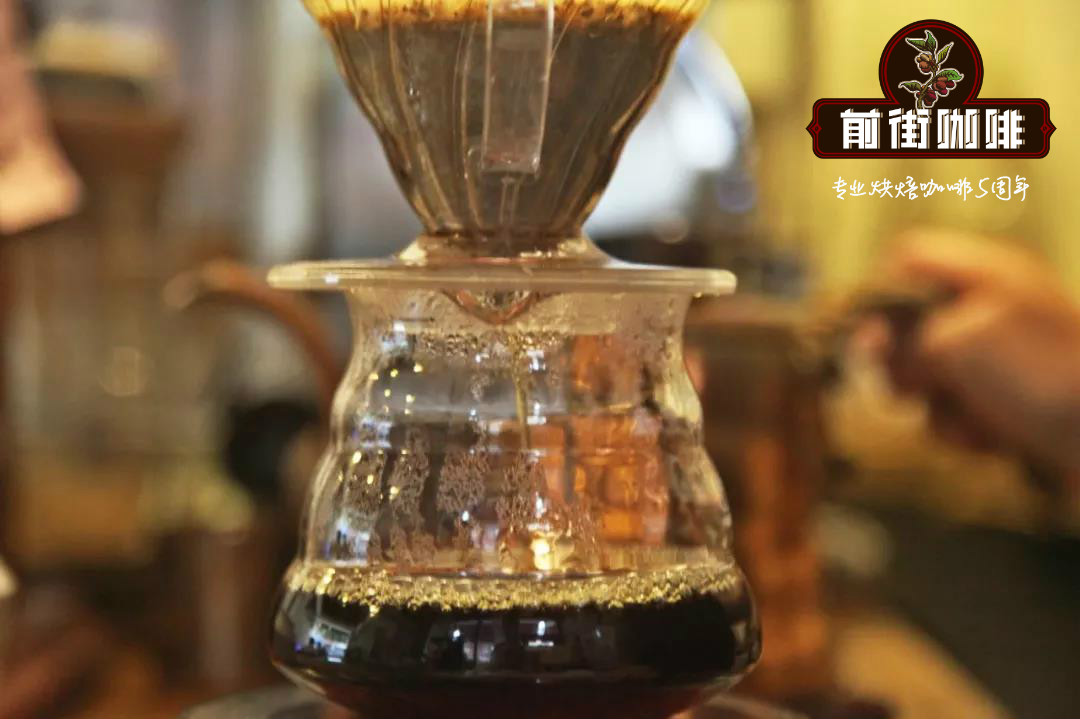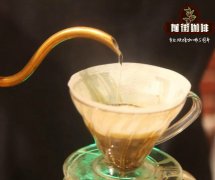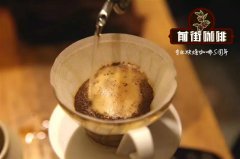The right way to make coffee by hand: the three principles that beginners need to know

Professional coffee knowledge exchange more coffee bean information please follow the coffee workshop (Wechat official account cafe_style)
The fun and charm of hand-brewing coffee is that it can be made in a convenient and easy way. In fact, the editor does not understand it from the very beginning, but also through reading, learning, and brewing experiments. Sum up some commonly used hand-brewing skills according to your own experience.
Today, I recommend a hand-made book to you. "this is the right thing to do." author Huang Linzhi
In order to enable more coffee-loving readers to further acquire professional knowledge of hand-brewing coffee, Huang Linzhi, the author of this book, once again presents the complete and systematic teaching and experience of hand-brewing coffee in the form of professional teaching books. so that friends who like to make hand-made coffee can learn the knowledge of hand-brewing coffee after reading this book, and can easily be a master of hand-brewing coffee at home.
In fact, there are not many utensils needed to make coffee by hand. A filter cup, a piece of filter paper and a hand pot with freshly ground coffee powder can take five to ten minutes to make a cup of coffee at home or in the office.
The three principles of invincible hand-brewing coffee:
One. Do not exceed the amount of water that can be absorbed by particles each time.
Two. use a penetrating water column so that undrained particles can eat water every time.
Three. Let the particles do not rest in the water, each time the amount of water supply is larger and more than the previous one.
First, each time the water supply should not exceed the amount that the particles can absorb.
As you all know, coffee particles contain a lot of irregular space like a beehive, and when we give hot water, we do a move to absorb and exhaust water. What is meant by "do not exceed the amount that the particles can absorb"?
It is very simple to regard the part of the particles as individuals. The internal space of each coffee particle is limited and cannot absorb a large amount of water. During brewing, the particles will come into contact with hot water, the woody fibers of the particles begin to expand, and the hot water gradually enters. Push the gas outward, at this time the condition of the particles is impossible to draw water.
If the amount of water given at this time is too much, it will be obvious that the particles will surface very quickly and cannot be extracted, which is equivalent to soaking the draught particles in the water, which leads to the miscellaneous taste and astringent feeling of the coffee coming out. So every time the water supply needs to be given a reasonable amount of water, this is one of the principles.
Second, the use of penetrating water column so that each water supply can allow undrained particles to eat water.
Generally speaking, a penetrating water column means that in the process of water supply, it is expected that every time the water supply is supplied, the water column can pass through the powder layer that has already been drained before, so that the unabsorbed particles in the lower layer begin to draw water. Assuming that it cannot reach the ideal state, it means that each time the water is given only to allow the previous particles to eat water repeatedly, which is equal to too much water supply.
The first point will echo each other, resulting in excessive extraction, and the powder layer deposited at the bottom due to the absorption of water by the particles can not make proper disturbance and tumbling, resulting in excessive soaking, resulting in miscellaneous smell and astringent feeling, which is the second point.
Third, let the particles do not rest in the water, each time the amount of water supply is larger and more than the previous one.
In fact, it is not difficult to make a good cup of coffee. It is much easier to understand the principle of the combination of coffee and water. Two of the three major directions of water supply have been revealed. The word "excessive immersion" is repeatedly mentioned in the previous text, that is, the third key point.
The reason is very simple, just like cooking rice, boiled rice, fried steak, steamed fish, fried green vegetables, etc., everyone does not like undercooked or overcooked, because it will not taste good, will not be delicious, or even can not eat, the food is like this, the same is true of making coffee.
How to keep the particles from standing still in the water? Why does the water supply need more and more each time? Now the structure of particle draught should be more and more solid, we will use the mode of water supply combined with the way of particle draught to discuss this key point.
When the particles come into contact with the hot water we give, there will be two separate things, the particles absorbing water and pushing the gas out. Now let's talk about the two topics separately.
Objects continue to absorb water will become heavier, coffee particles are no exception, the weight of the particles will sink, relatively light will continue on top, until the particles in the filter cup gradually saturated, the specific gravity is larger than water, will fall to the bottom of the filter cup.
Because the exhaust between the particles will push each other to create a space, and the state of the particles after absorbing water and the disturbance caused by the water supply will cause the so-called potential difference, the reason is that the coffee particles in the filter cup cannot have different weight of the same grain, so the heavier ones are at the bottom and the lighter ones are at the top.
Now it is more clear that the relationship between particles and water, heavier particles will be deposited at the bottom, if the amount of water supply can not become larger and larger, the particles accumulated at the bottom can not be disturbed, continue to soak, for a long time will become the so-called excessive immersion; remember the first element? The amount of water should be appropriate, otherwise there will be too much water supply, particles soaked for too long, cooking mixed flavor, this is the second kind of excessive immersion.
The above three main points are the general principle of giving water, and each point will be related to each other. this is the so-called detail. when the devil hidden in the details is caught, it is easier to clarify uncertain concepts and apply them to brewing and theory. the world of coffee becomes clearer, connecting more and more clues, and then stringing each clue together. The serial tool is the key ── water injection technique that will be explained immediately. It is recommended to see the basic skills of novice coffee skills, "stable circle" + "soft water injection" + "cut off water".
Related recommendation: is hand-made coffee really good? Why does coffee smell better than it tastes?
Important Notice :
前街咖啡 FrontStreet Coffee has moved to new addredd:
FrontStreet Coffee Address: 315,Donghua East Road,GuangZhou
Tel:020 38364473
- Prev

Explanation of three-stage water injection | timing of water injection for hand-brewed coffee
Professional coffee knowledge exchange more coffee bean information please follow the coffee workshop (Wechat official account cafe_style) when is the timing of this water injection, how should three-stage water injection? Also, is the steaming time calculated from the beginning of water injection, or is it timed after water injection? First of all, the editor first explains: the demonstration and suggested parameters of the editor are all from water injection.
- Next

Analysis on the brewing techniques of hand-brewed coffee introduction to the temperature parameters of water-powder ratio of hand-brewed coffee
Professional coffee knowledge exchange more coffee bean information please follow the coffee workshop (Wechat official account cafe_style) many people want to learn to make coffee by hand. Recently, several brown friends have asked about the skill of hand brewing from time to time. How come there is no so-and-so cooking incense and sweetness? It seems very simple. actually
Related
- Beginners will see the "Coffee pull flower" guide!
- What is the difference between ice blog purified milk and ordinary milk coffee?
- Why is the Philippines the largest producer of crops in Liberia?
- For coffee extraction, should the fine powder be retained?
- How does extracted espresso fill pressed powder? How much strength does it take to press the powder?
- How to make jasmine cold extract coffee? Is the jasmine + latte good?
- Will this little toy really make the coffee taste better? How does Lily Drip affect coffee extraction?
- Will the action of slapping the filter cup also affect coffee extraction?
- What's the difference between powder-to-water ratio and powder-to-liquid ratio?
- What is the Ethiopian local species? What does it have to do with Heirloom native species?

